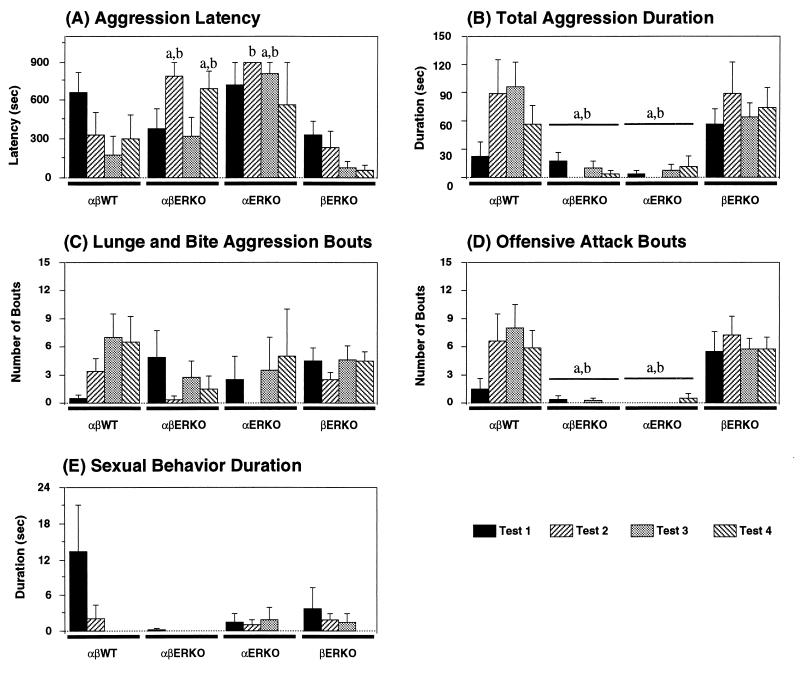Figure 2.
Effects of ERα and/or ERβ gene disruption on (A) latency to the first aggressive act, (B) cumulative duration of all aggressive bouts, (C) number of lunge and bite aggression bouts, (D) number of offensive attack bouts, and (E) cumulative duration of attempted sexual behaviors toward male intruder mice, during resident-intruder tests. There were significant genotype differences in total aggression duration (B) and number of offensive attack bouts (D) throughout the four tests (P < 0.01) but not in the number of lunge and bite aggression bouts (C). Post hoc comparisons for the main effects of genotype revealed that both αβERKO and αERKO mice were significantly less aggressive compared with αβWT as well as βERKO. On the other hand, there was a significant (P < 0.01) interaction between genotype and test in aggression latency (A). Latencies in αβWT and βERKO males steadily decreased with the repetition of the tests, whereas those of αβERKO were shorter in the first and third tests compared with the second and fourth tests. Post hoc comparisons for genotype differences, therefore, were performed in each test separately for this measurement. Finally, αβWT showed substantial amounts of sexual behaviors in the first test compared with other three genotypes of mice, although overall genotype differences were not significant. a: P < 0.05 vs αβWT, b: P < 0.05 vs βERKO.

